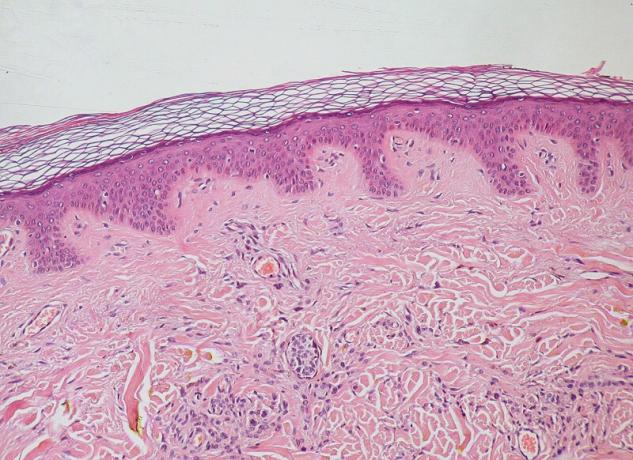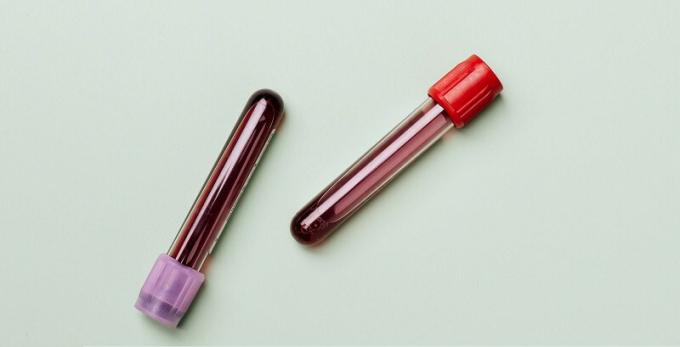Connective tissue: what it is, characteristics and types
Recent research estimates that the human body is made up of 30 trillion cell bodies, divided by their capacities into different functionalities. 80% of all these cells are red blood cells, since they report the unimaginable number of 5 million erythrocytes for each cubic millimeter of blood of an adult person. After them come platelets (4.9%), hematopoietic cells from the bone marrow (2.5%), lymphocytes (1.6%) and other vascular bodies.
Interestingly, the epithelial cells and those that make up the organs are the minority of the total cell bodies, since the epidermis only represents 0.5% of the total. Adipocytes, muscle cells, neurons, hepatocytes and other cell conglomerates are the vast minority within our body. In any case, they perform a series of essential functions in the survival of the individual and species over time.
With these data, we wanted to reflect a bit on the immense cellular and tissue diversity that the human body collects. For all these structures to have three-dimensional coherence and aggregation,
some type of tissue is necessary to act as a bridge and support. In the following lines, we tell you everything about connective tissue.- Related article: "Main Cell Types of the Human Body"
What is connective tissue?
Connective tissue, also known as connective tissue (TC), is a term that encompasses different cell groupings (in addition to the matrix and its fluids), whose common function is to connect, support, and help maintain the physical integrity of the various tissues of the body.
Connective tissue is an “umbrella” term, as it encompasses a large number of tissue groups. In any case, all of them present 3 basal characteristics:
- Ground Substance (SF): A translucent, hydrated material with a gelatinous consistency. The typical cells and fibers of the tissue in question are suspended in it.
- Fibers: of many types, depending on the tissue. Among them, collagen, protein, elastic and microfibrils stand out.
- Cells: they are almost all fixed and immobile. They depend on the type of connective tissue that is consulted.
Types of connective tissue
All connective tissues have these characteristics, but beyond them, the variety prevails over the general. Next, we present the types of connective tissue, according to their functionality and degree of specificity.
1. own connective tissues
The proper connective tissue (or connective tissue itself) is that with a more general function and lower degree of development. It is divided into two variants: loose and dense.
1.1. loose connective tissue
It is the most common type of connective tissue in vertebrates. It is responsible for keeping the organs in place and fixing the skin on the underlying tissues..
In this category are found, for example, mucosal, reticular and mesenchymal connective tissue. Loose connective tissues usually have a mesh-like tissue organization, a fluid matrix, and functionality characterized by the protection of weak organs and structures.

1.2. dense connective tissue
Unlike the previous case, the dense connective tissue type is characterized by a high content of fibers in its matrix, which are usually type I collagen. Among these collagen fibers are fibroblasts, the cells that produce collagen themselves through various metabolic pathways. Due to its solid state and high cohesion, this tissue is ideal for forming part of ligaments and tendons, for example.
At the same time, dense connective tissue is subclassified into two variants: regular and irregular. In the first, the collagen fibers are arranged in parallel, while in the second, the collagen is in disorganized arrangements.

2. specialized connective tissues
From here, we move away from the "usual" connective tissues, diffuse and mostly undifferentiated, to enter a much more organized and well-known terrain. Let's go there.
2.1. adipose tissue
It is a tissue of mesenchymal origin, made up of a cellular association in charge of storing lipids: adipocytes.. These cells represent 95% of the total adipose tissue and their function is to store energy in the form of triglycerides.
Within adipose tissue, two types can be distinguished. Brown and white. White adipose tissue (unilocular) is the majority in mammals, and is responsible for storing fat in a semi-liquid state in the form of a large drop.
On the other hand, brown or brown fat stores the lipid content in different drops (multilocular) and contains a high number of mitochondria in each adipocyte. While the white tissue is responsible for long-term fat storage, the brown burns it, at times when it is necessary to produce heat.

- You may be interested in: "Adipose tissue: what it is, types and characteristics"
2.2. Woven bone
Normally, the human being has the perception of bone tissue as immovable, strong and permanent over time. Although bone tissue is hard (due to the hydroxyapatite crystals that make up its matrix), it is also synthesized and resorbed at variable rates., depending on the needs of the organism at any given time. 99% of calcium is stored in the bones, and when it is necessary to use it and it is not present in the diet, part of the bone tissue has to be destroyed to recover it.
Depending on its nature, bone tissue can be dense or spongy.. Various cell bodies are found in both, including osteoclasts, osteoblasts, osteocytes, and osteoprogenitor cells. Unfortunately, the more time passes in the life of the individual, the more matrix is broken and less is generated. It is no coincidence that up to 80% of the population (especially women) present signs of osteoporosis at 80 years of age.

23. Blood tissue
Although it may not seem like it, blood is also a type of specialized connective tissue, because at the end of the day it is putting different organs in contact with each other, through a series of fibers, matrix (plasma) and cell bodies. Platelets, white blood cells and erythrocytes navigate through the blood vessels, all of them with different and complementary functions. Platelets are responsible for coagulating blood in the event of injury and maintaining internal homeostasis, lymphocytes respond to endogenous and exogenous threats, and erythrocytes carry oxygen to each and every tissues.
Although it is a different type of tissue, this group can also include hematopoietic tissue, the precursor of the aforementioned blood cells. This is found mainly in the red bone marrow, the center of synthesis of erythrocytes and white blood cells.

2.4. Cartilaginous tissue
The cartilage tissue is a type of elastic, avascular (without blood vessels), specialized connective tissue consisting almost entirely of matrix and scattered chondrocytes.
Cartilage is essential for the movement and locomotion of living beings, since it covers the joints, joins the ribs with the sternum and, in addition, serves as a point of support and lining for the trachea, bronchi, external ear and septum nasal.
@image (i28311)
2.5. lymphatic tissue
In this section, something similar to what is mentioned in blood tissue occurs: not a solid tissue organization, but also contains fibers, cells, and matrix, so it falls within the definition of “connective tissue”; albeit in a highly specialized modality.
Lymphatic tissue is the highway of travel (along with blood) for lymphocytes, macrophages, and plasma cells. Therefore, its functionality is eminently immune.

Summary
As you will have been able to verify, the connective tissue goes far beyond those diffuse layers that are located by supporting the skin or protecting the organs and keeping them in place in the cavity abdominal. Much more specific concepts are also included here, such as fat, blood, lymph, cartilage and even bones.
All these tissues have 3 characteristics in common: they contain fibers, matrix, and cells embedded in it. Depending on the dominant cell type and its primary function, connective tissue can be broken down into many different categories and dimensions.
